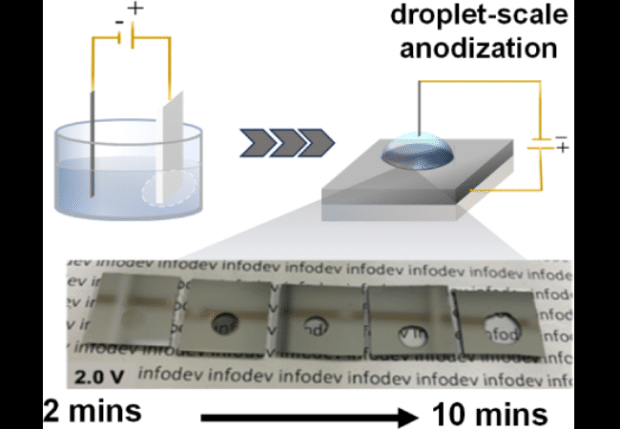Pinoy scientists make transparent aluminum via acid droplets

MANILA, PHILIPPINES — Ateneo de Manila University researchers developed a cost-effective way to create transparent aluminum oxide (TAIOx).
They applied microdroplets of acidic solution onto small aluminum surfaces and applied an electric current.
READ: Graphene oxide improves 3D-printed concrete
Article continues after this advertisement
The method only requires two volts of electricity, smaller than the amount in an AA household flashlight battery. This process is called “droplet-scale anodization,” which is simpler than existing manufacturing methods.
Also, it is environmentally friendly, reducing energy consumption and chemical waste.
It relies on the “electrowetting” effect, where an electric field changes the properties of a liquid droplet.
Article continues after this advertisement
Consequently, researchers gained precise control over the anodization process.
In comparison, the conventional ways of making transparent aluminum oxide are expensive and complicated.
They require high-powered lasers, vacuum chambers, or large vats of dangerous acids.
The Ateneo researchers’ method could make TAIOx more affordable and applicable in everything from touchscreens and ultra-durable vehicle coatings.
Also, it could promote further advancements in miniaturized electronics, as scientists can now turn metal surfaces into insulating, transparent layers.
The following researchers worked on this transparent aluminum breakthrough:
- Marco Laurence M. Budlayan, Ateneo de Manila University
- Raphael D. Guerrero, Ateneo de Manila University
- Juan Paolo S. Bermundo, Nara Institute of Science and Technology
- James C. Solano, Nara Institute of Science and Technology
- Mark D. Ilasin, Nara Institute of Science and Technology
- Yukiharu Uraoka, Nara Institute of Science and Technology
They published their findings in the journal Langmuir.